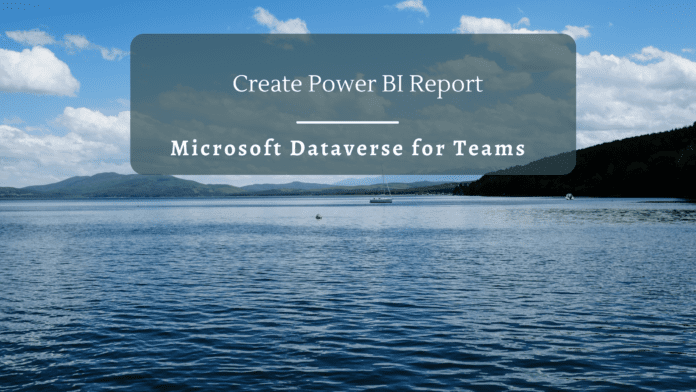Introduction
With the ability to create Power Apps natively inside Microsoft Teams, the possibilities of ease of access and fostering faster collaboration are taken to the next level. We can now create Dataverse tables for Power Apps from Teams to store and display data as needed.
In this article, we will see how to connect the Power BI desktop to one of such Dataverse for teams table data to pull the data and build reports.
Dataverse Table for Teams
We can explore and view the Dataverse Table in Teams from the Power Apps personal app. Head over to Build and select See All which will list all the Tables and Apps.
We can edit and make changes to the Tables from here.

Fetch the Environment URL
To connect to this table, If we are using the Legacy Common Data Service connector, we will first have to get the URL for the Dataverse for Teams Environment which we can get from the About tab.

Copy the Instance URL which is the Dataverse for Teams environment URL.
Note: If we are using the modern Dataverse connector, the environment URL is not needed as it connects to the Environment using Azure AD authentication and lists all the Dataverse tables available in the tenant.
Connect to Power BI
We will now use this URL to connect from Power BI. Open Power BI Desktop, Select File -> Get Data and Select Dataverse

Sign in to connector using the Microsoft 365 account and click on Connect.

Note : In case if we are using the Legacy Common Data Service Connector, we can supply the environment URL that we fetched earlier to make the connection

Since we are using the Datverse connector, it seamlessly lists all the available dataverse tables for consumption. I have selected the Dataverse for teams table and will click on Load to import the data to Power BI workspace.

Once the data is inside Power BI, we can transform and make changes to the data and create stunning reports using the available Power BI Visualizations

Note: In case you encounter issues with Choice Field from Dataverse table being empty in Power BI refer to this article for a possible workaround.
Summary
Thus we saw how to connect Power BI to Dataverse for Teams Table to generate reports out of the data.



